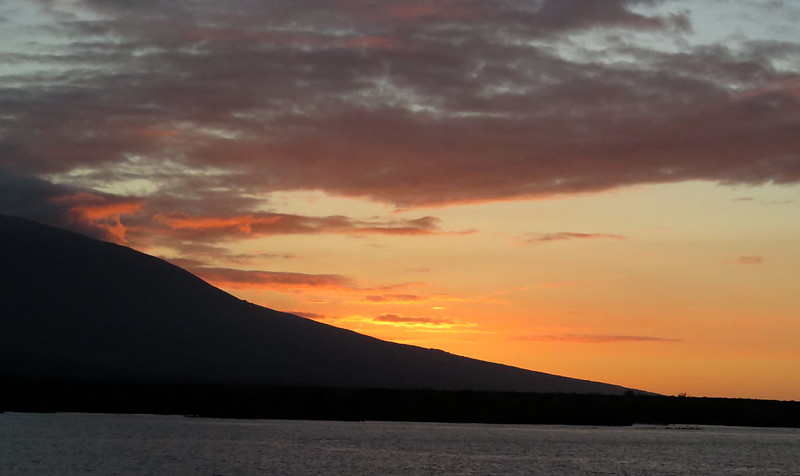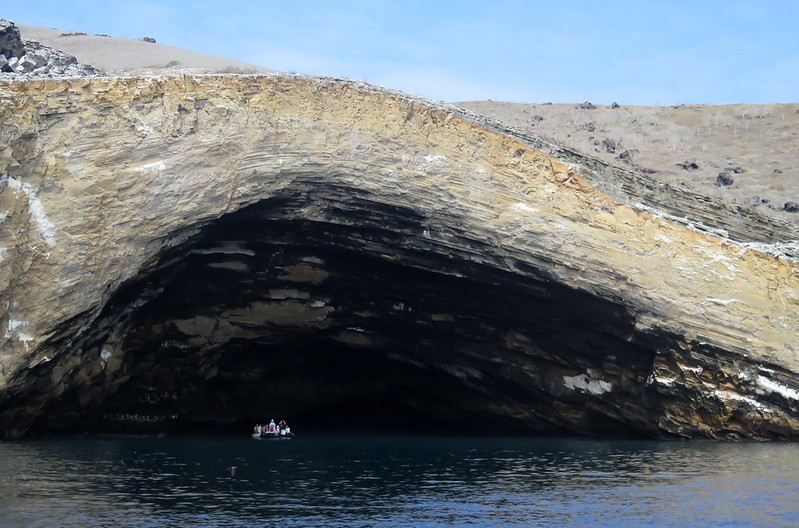
The north-west side of Isabela and the island of Fernandina are some of the most isolated places in the Galapagos. Because these locations are six hours from any port, they’re nearly impossible to visit unless you take a multi-day cruise. Outside of areas restricted to research only, these are the most isolated places in the Galapagos. This is the Galapagos, nearly untouched by human hands.
—
Our morning activities are a mix of zodiac boating & snorkeling off the coast of Punta Vicente Roca. We board a zodiac and with our guide from the Santa Cruz II and speed toward Isabela, cameras at the ready to spot today’s sights. While there’s still mist over the water, the equatorial sun is rapidly raising the temperature and animals are taking full advantage of it, sunning themselves while resting on the rocky cliffs. We spot Galapagos fur seals near the surf line, so far away that my camera cannot hope to render one visible–their brown fur blends in with the rocks perfectly, and they’re revealed to us only by their wriggling as they climb ashore. Unlike their cousins the Galapagos sea lions, the fur seals here are endangered, hunted to near extinction in the previous centuries for their fur. Although they’re now protected, low success at raising pups to adulthood weighs heavily on the population: in times of scarce food, up to 80% of pups born die within months. Since times of scarcity are often triggered by severe weather events like El Nino, it’s hard to tell whether this species will survive as the global climate changes.
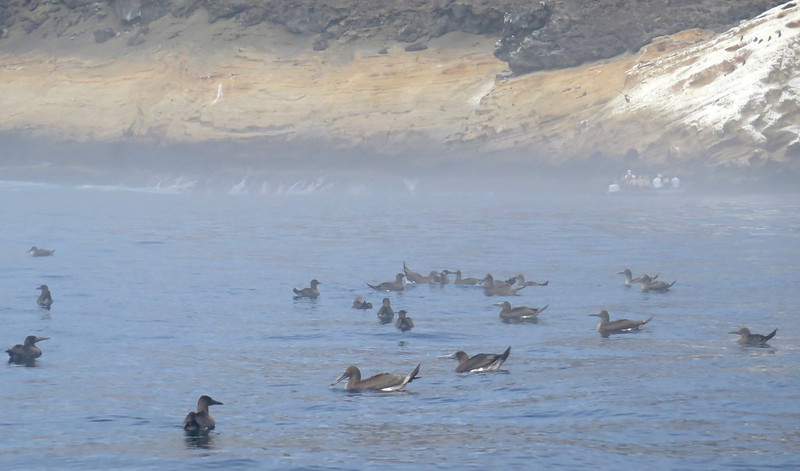
Punta Vicente Roca is also a birder’s heaven – there are several different species out this morning, nesting along the cliffs, preening themselves, and swooping down into the sea to catch fish. We spot blue-footed and Nazca boobies, brown noddies, lava gulls, and Galapagos petrels. They cluster in pairs or groups along the cliffs of Isabela, staining the rocks white with their poop. In fact, some parts of the cliff are less rocks and more bird poop than anything else. Though we might find this gross, wars have been fought over the control of bird poop as a resource. “What, why?!” you’re thinking. Because before we had chemical processes to produce fertilizer, bird poop was the stuff. Rich in nitrogen, phosphates, and potash, this was how the world improved crop yields and fed more people.
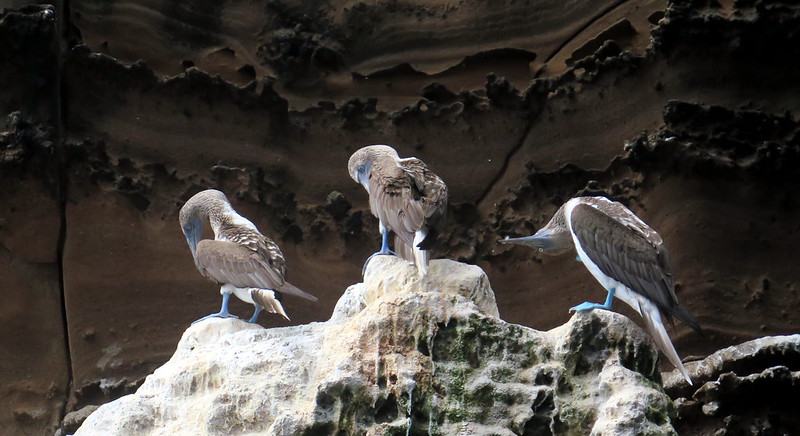
While the animals are the draw for most people, the rocks these creatures rest on are also fascinating. Geologically, Isabela is one of the youngest islands in the Galapagos, formed only a few million years ago when six volcanoes spewed forth enough lava and ash to fuse and form the island island. Our guide points to one cliffside, where a jagged edge of tan and black meet – this was was the edge of a lava flow, a place where lava stopped and ash and dirt compacted to continue the island’s length. This history is written in the cliffs, visible in consecutive layers of gray ash and black lava between dirt. And most of these volcanoes are still active, periodically oozing lava and exhaling ash that settles over the island and the sea, growing the island outward, ever outward.
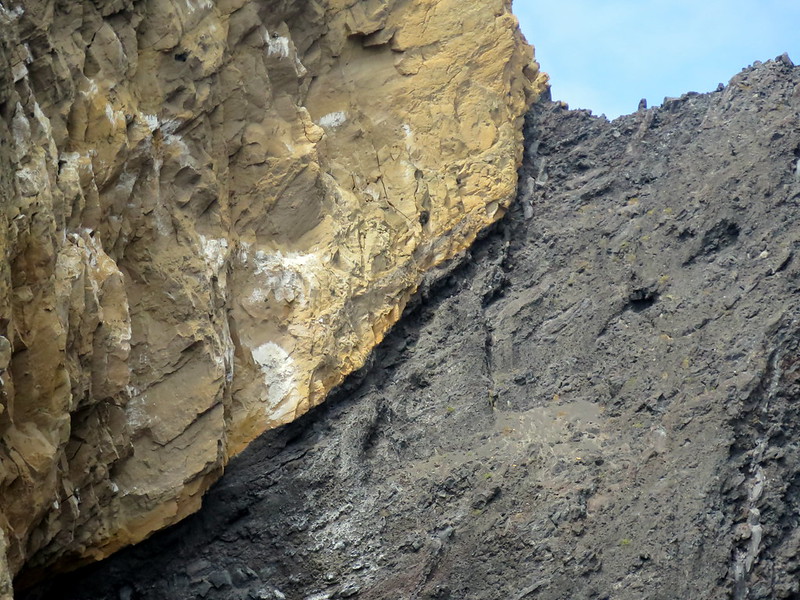
—
After returning from our boat ride, we get a few minutes of rest (and snacks and juice), then we’re preparing to snorkel. I’ve been warned the water is frigid, a feature of the same upwelling that causes California’s frigid water temperatures year round. And, being Californian, I decide I can handle it and won’t need the $25 wetsuit rental provided by the cruise. I have, however, purchased a disposable underwater camera from the cruise’s gift shop, because for some insane reason we left our GoPro at home for our trip around the world. Don’t ask, I don’t know what we were thinking.
We gather at the back of the ship, load into zodiacs again (this time free of life vests), and head back toward the shore. Because the park management does not allow landings at Punta Vicente Roca, we’re told to stay away from the rocks and then let loose into the ocean. I don my snorkel and fins and am the first over the edge in my boat, swinging my legs over and plunging into the water before I have a chance to think about how it will feel.
FU**, it’s COLD. I can feel my body shudder and my breathing increase to near hyperventilation. I force myself to relax and slow my breathing, but I still feel a vague sensation of arrhythmia in my heartbeat, probably thanks to the mammalian dive reflex all humans experience. I’ll stay warm longer if I keep moving, so I force myself to swim. At the end of twenty minutes, I’m so cold that I have to climb into a zodiac boat and sun myself like a lizard. I’m painfully aware that I’ll burn in the sun as quickly as I’ll warm, so it’s out for only about five minutes before I jump in again. I can’t even imagine how good a hot shower will feel after this.
The marine life here is beautiful and reminds me of California. It’s not the traditional image of a thriving tropical reef, but is instead a rocky shoreline rich with schools of silver fish, swimming seals, and diving shorebirds intent on a meal. The one animal addition that stands out (and we definitely don’t see in California) is the green sea turtle. There are dozens of them, gliding through the water, browsing the selection of algae on the rocks, and coming to the surface to sun themselves. Some are small, less than two feet long. Others are massive, as large as I am. As we swim by, the turtles look up, but mostly ignore us. They’re interested in their lunch, and after snorkeling I find I’m looking forward to mine.
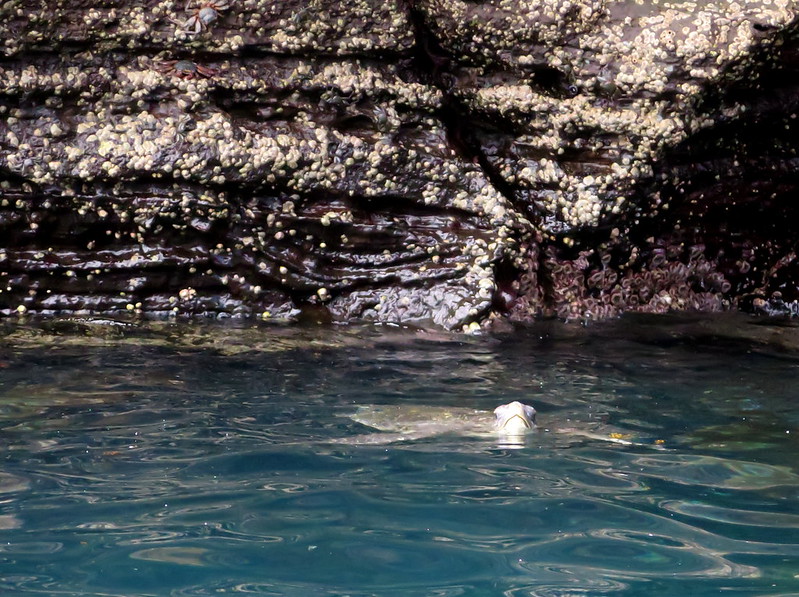
—
After lunch, our cruise makes its way to Fernandina island, and we are delivered onto Punta Espinoza. This is the sole place that tourists are allowed on Fernandina Island; the rest of the island exists solely as a nature reserve. The dominant life here at Punta Espinoza are the marine iguanas, which greet us by the scores as we step off the boat and onto a hardened lava flow. The iguanas lounge about, soaking in the sun and crawling along the shore to find their preferred food, marine algae. The larger males are skilled swimmers and also dive to graze algae from underwater rocks. It helps them gain a winning edge when food is scarce, and given the number of iguana skeletons lying around, food was scarce not too long ago.


The other divers that make their home here are the flightless cormorants, found only here in the Galapagos. Unused, their wings have shrunk to scrawny stubs that sport only a few pinion feathers and resemble sparse palm fronds. These birds are ungainly on land, but can swim circles around nearly any living creatures underwater. Still, they need to return to land to rest and warm their bodies, as the cold ocean water can chill them to death. They also need land to nest, as we find one bird doing. She is sitting on two eggs in a nest composed of seaweed and guano, and doesn’t take kindly to a nearby marine iguana. I’m not sure if a marine iguana would pose a threat to the eggs, but given that most reptiles are opportunistic omnivores, I wouldn’t trust him either.
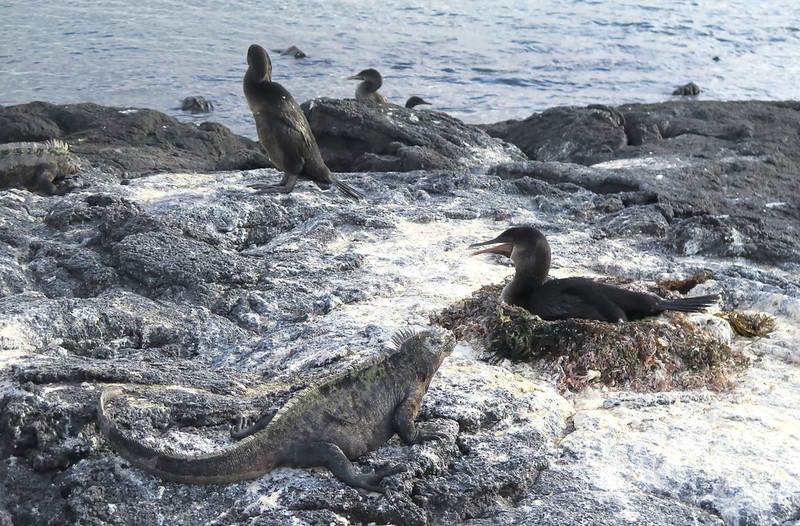

As we near the end of our hike, we encounter a lava flow dotted with odd brown clusters, which turn out to be, of all things, plants. These are the the lava cactus, another species found only in the Galapagos. Not much is known about the lava cactus, except that it’s one of the first living things to grow in lava fields. We know it has the ability to survive on little water and no soil, that it flowers briefly before dawn, and that it produces small, red berries. Where it gets nutrients to sustain itself from is unknown, but I would venture to guess that the cactus secretes a mild acid from its roots that slowly dissolves the volcanic rock, freeing up minerals for the plant to absorb. As it only exists on one of the most beautiful places on earth and isn’t mobile, I’d highly recommend it as a study subject for anyone looking to do research.
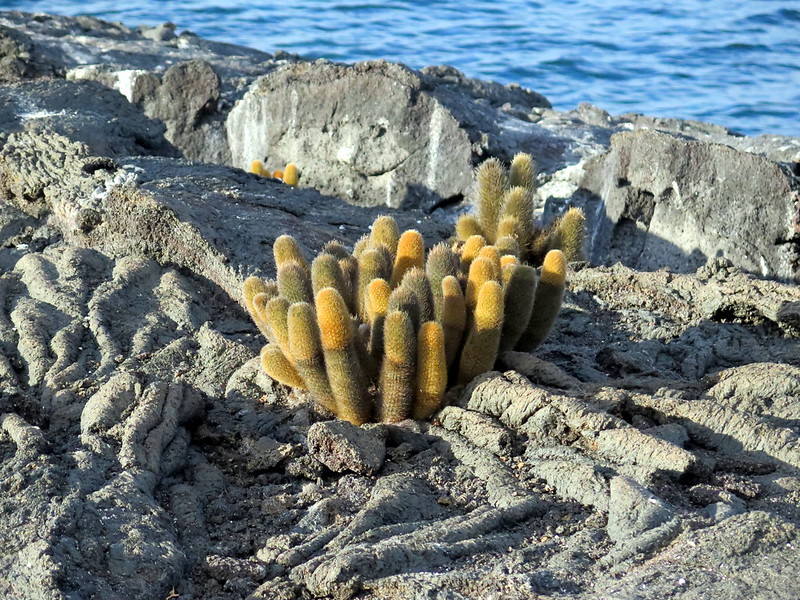
We complete our hike with a brief walk through a mangrove forest, where I spot and photograph an island inhabitant that nobody else notices – a small spider hiding out in its web. Unlike most web-weaving spiders, this one seems to have built a small, bell-shaped house for itself. I’ve never seen a spider like this before and haven’t been able to match it to any spider in the Galapagos so far, so it’ll have to remain a mystery.
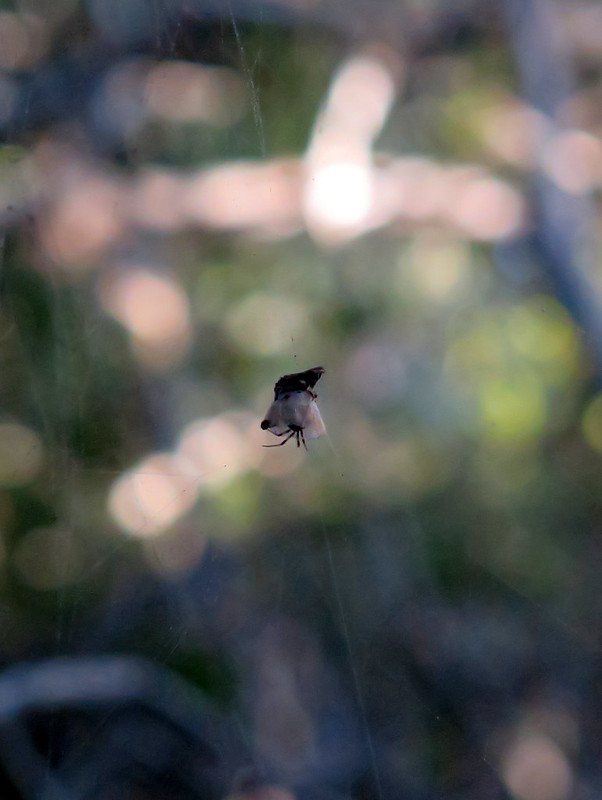
We emerge at the end of the mangrove forest and I’m surprised to find that the water has risen by nearly a foot in the hour we’ve spent walking. Our landing point lays entirely submerged in the bay, as are the mangrove roots around us. A zodiac boat comes to pick us up, and as we speed back toward the ship we can see the sun setting behind Isabela, a halo of bright fire around one of her volcanoes. There’s no sign of any human activity anywhere on the island–no other ships, no dwellings, nothing. This is the Galapagos how it looked hundreds of years ago, and hopefully it will look this way for hundreds of years to come.
